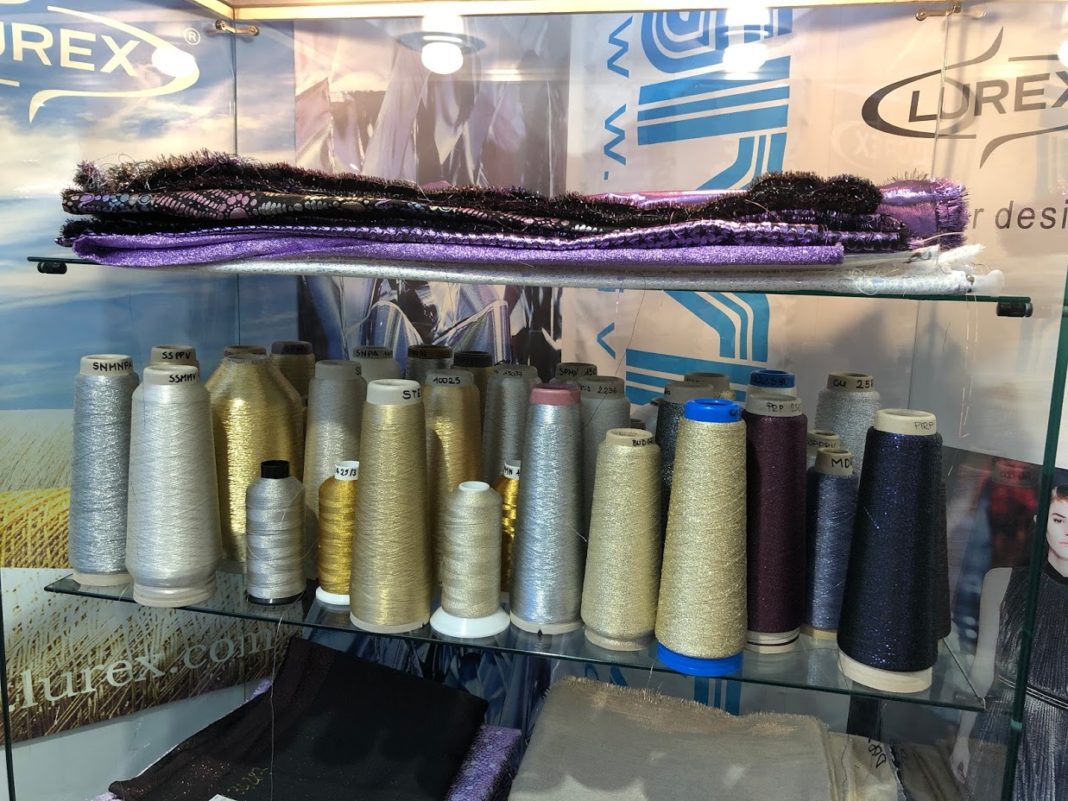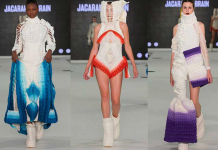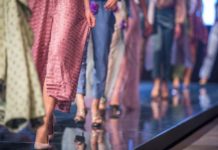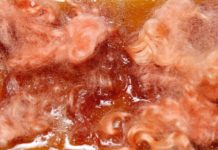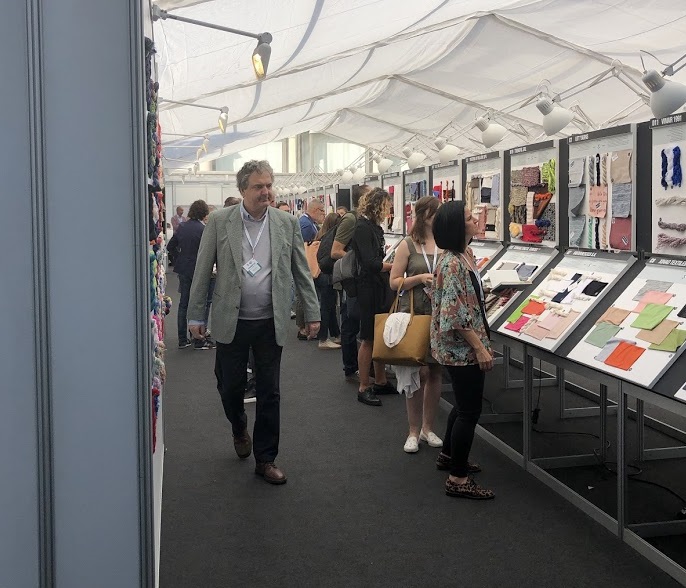
Yarns for 2021 shown in Milan at Filo in September continued to increase the ratio of yarns for knitting. Despite quite gloomy forecasts of world trade, buyers seemed to buck the trend, reacting to Filo designs which continued to show colourful effects, textures and new technical features all in an ecological context.
Filo announced a new emphasis on the importance of yarns in the sustainable chain. Paolo Monfermoso, Managing Director of Filo, introduced the concept of Filo Flow at a press conference, to acknowledge the importance of yarn in the textiles chain.
Chinese exhibitors
The 10 new exhibitors at this 52nd edition of the show all had an eco focus. Bigger Chinese spinners included Jiangyin Kaibang Special Yarn, with recycled yarn like 76% polyester /33% recycled polyester. Xinao Textiles Europe, a vertical enterprise employing 2200 with a farm in Australia, spins fine wool, silk and cashmere; it also showed yarns from recycled polyester and wool.

Newcomer Muling Zinling Linen has annual output 2,000 tons of pure linen yarn, Nm 6.5 to Nm36, developed for a very big domestic market. It is growing international trade in the Far East and has a particular European focus. These companies had organically raised cotton or organic certified yarns.
Dyeing and tinting
A larger number of dyers exhibited. Dyeing is intimately involved in the sustainable features of yarn. “For this reason, we have expressly invited more mills which are involved in dyeing,” explained Paolo Fonfermoso. Many had natural dyes in their portfolios, and all claimed huge improvements in chemical dyes to avoid environmental detriment. Shaoxing has developed low temperature cationic dyes, which preserve energy and water.
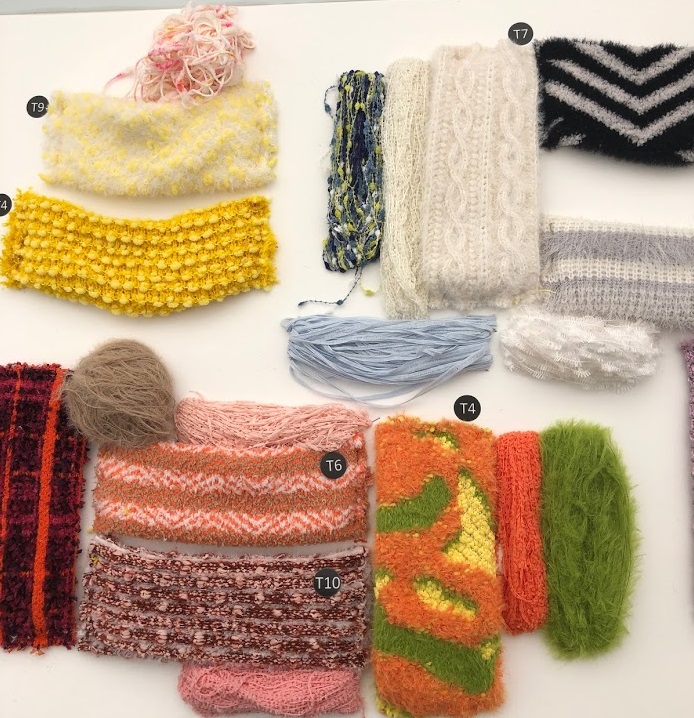
Iride was one of the first Italian mills to develop natural dyes for industrial use thirty years ago. Taken up by designer labels like Ferragamo, they are mostly created in powder form with a reputation for reliability in washing etc. The company is installing a new jersey cutter this year in order to expand processes, with mixed fibres as a particular emphasis, for example, silk, linen, cotton and viscose.
Fancies and sparkle
Floral shades in shiny tones with sparkle dominated knit yarns, using gold thread and other precious metals as well as metallo-plastics. Mineral colours take on the sheen of stone, grey yarns with points of shine, blended wool and silk, cotton and silk, and many different Lurex yarns including FR qualities and holograms.
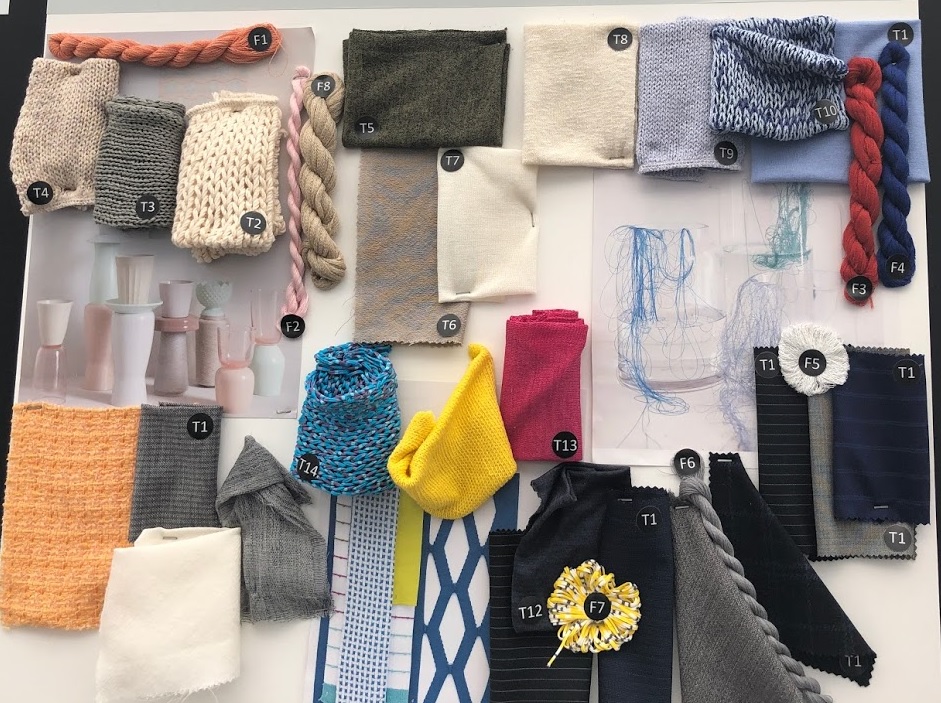
Double yarns, in dark and lighter contrasts of grey, in ribbon construction or wrapped yarns feature shine and marbling effects for the showy look of the season.
The trend for fancies was strong, seen in many fibres natural, noble and manmade as at specialists Ilaria, with boucles, neps and stretch, and at Luigi Boldrini with colourful looped and fluffy yarns in polyester and polyamide including 89 recycled PES /11PA.
Responsible production
The message about responsibility is having a real effect at all levels of the market, from couture and high brands, to small manufacturers and niche operators; all reported the impetus is coming from the shop customers and very exacting buyers who demanding fool-proof certification and assurances about provenance, conditions for workers, animals and end of life possibilities.
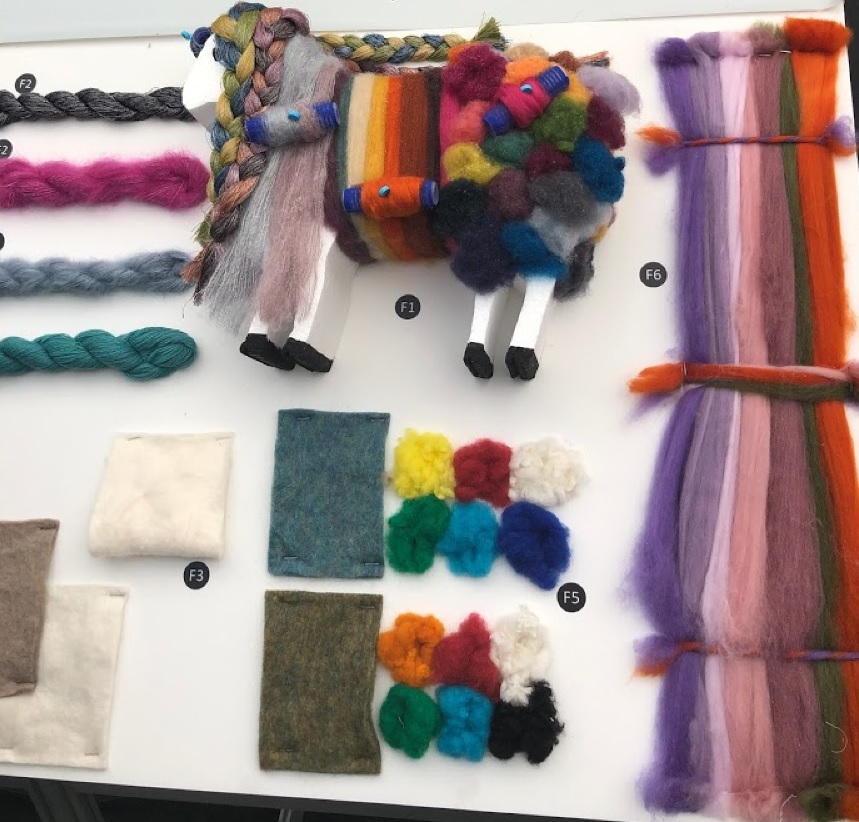
Varvaressos, Greece, Masters of Smart Cotton Science are an avowed sustainable company, members of the Better Cotton Initiative, growing highly controlled local Green Cotton using electronically calculated irrigation, administered drip by drip, and planting high-quality seed, Supima and Premium Pima cotton. They are currently spinning cotton with Lenzing Modal and micro Modal and had a busy stand visited by many international buyers.
Luxury and sustainability
Precious and unusual fibres blends were in demand – silk, fine linen, Sea Island cotton, or wool from special breeds of sheep, the latter seen used in undyed knits in many shades at Luisa1966, also showing Lyocell blends, cashmere, alpaca and silk.

Zegna Baruffa Lane Borgosesia’s new collection gives life to yarns for precious fabrics by blending silk, extra-fine Merino wool, cashmere and adding shiny gold and mineral looks – very 2021. Operating at the top end of fashion, it has already published sustainability reports with other companies, anticipating reporting requirements being formulated in many countries’ legislatures.
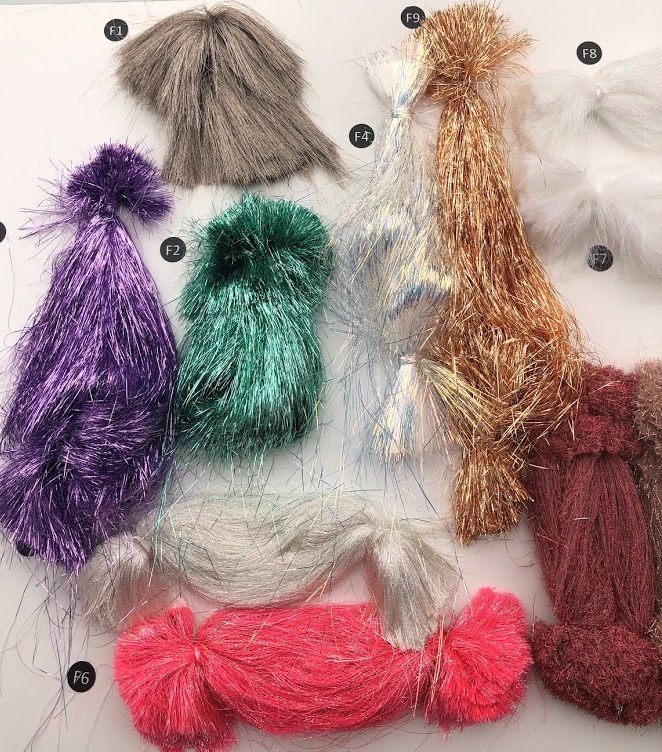
Marchi & Fildi is known as a pioneer, with the first luxury Ecotec cotton. The company has certified efficiency, smart water energy and CO2 emissions, confirmed by Life Cycle Assessment, quantifying savings in energy resources and water consumption along the whole production process. On show were fabrics made of interesting blends of linen yarn with Tencel, which give an unusual soft drape and touch allied to linen’s appearance and natural qualities.
Recycling
The demand for recycling is growing Filo exhibitors reported, and many companies are experimenting with pre-use or upcycled content, most of them certified. Else Bornewa, of Turkey, specialises in recycled yarns which are certified with GRS (Global Recycled standard) and Unifi Repreve for recycled polyester.
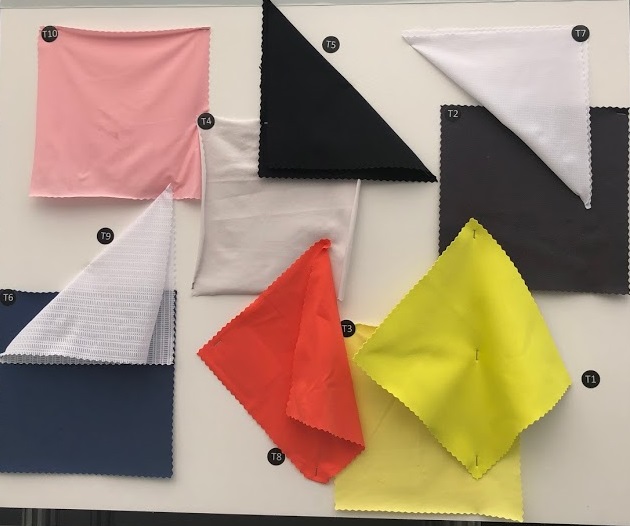
Technological advances affect companies’ abilities to improve sustainable practices, including the holy grail of dealing with elastic fibres. Roica by Asahi Kasei has a version which is certificated GRS with more than half the content derived from pre-consumer waste. Another version has a Cradle to Cradle Innovation Hohenstein certificate, Gold level, which indicates that at end of life, the stretch yarn breaks down without releasing harmful materials. This in an important development.
Filo produced a positive verdict. High-end producers are putting their money on verifiable sustainability and technology to give an edge to their products, at the beginning of the textiles chain, and there is a definite push towards recycled and renewable content.

Subscribe To Our Newsletter
Join our mailing list to receive the latest news and updates from our team.


